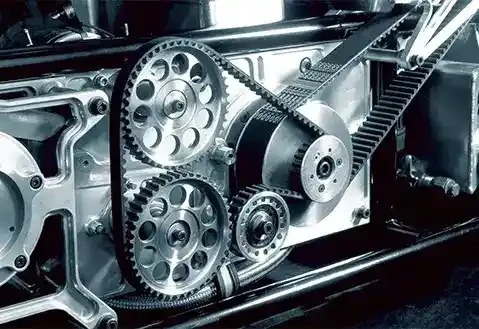- Arabic
- French
- Russian
- Spanish
- Portuguese
- Turkish
- Armenian
- English
- Albanian
- Amharic
- Azerbaijani
- Basque
- Belarusian
- Bengali
- Bosnian
- Bulgarian
- Catalan
- Cebuano
- Corsican
- Croatian
- Czech
- Danish
- Dutch
- Afrikaans
- Esperanto
- Estonian
- Finnish
- Frisian
- Galician
- Georgian
- German
- Greek
- Gujarati
- Haitian Creole
- hausa
- hawaiian
- Hebrew
- Hindi
- Miao
- Hungarian
- Icelandic
- igbo
- Indonesian
- irish
- Italian
- Japanese
- Javanese
- Kannada
- kazakh
- Khmer
- Rwandese
- Korean
- Kurdish
- Kyrgyz
- Lao
- Latin
- Latvian
- Lithuanian
- Luxembourgish
- Macedonian
- Malgashi
- Malay
- Malayalam
- Maltese
- Maori
- Marathi
- Mongolian
- Myanmar
- Nepali
- Norwegian
- Norwegian
- Occitan
- Pashto
- Persian
- Polish
- Punjabi
- Romanian
- Samoan
- Scottish Gaelic
- Serbian
- Sesotho
- Shona
- Sindhi
- Sinhala
- Slovak
- Slovenian
- Somali
- Sundanese
- Swahili
- Swedish
- Tagalog
- Tajik
- Tamil
- Tatar
- Telugu
- Thai
- Turkmen
- Ukrainian
- Urdu
- Uighur
- Uzbek
- Vietnamese
- Welsh
- Bantu
- Yiddish
- Yoruba
- Zulu
Noy . 13, 2024 21:16 Back to list
auto timing belt
Understanding Auto Timing Belts Importance and Maintenance
The timing belt is a crucial component in the engine of a vehicle. It is a reinforced rubber belt that ensures the synchronization of the crankshaft and camshaft, allowing the engine's valves to open and close at the appropriate times during each cylinder's intake and exhaust strokes. Failure to maintain or replace the timing belt can lead to severe engine damage, making it essential for car owners to understand its function, maintenance requirements, and replacement protocols.
The Function of the Timing Belt
The primary purpose of the timing belt is to prevent the pistons and valves from colliding within the engine. In an interference engine, the space between the pistons and valves is minimal, meaning that a failure of the timing belt can result in catastrophic damage—warped valves, bent pistons, and significant repair costs. Conversely, in non-interference engines, the damage may not be as severe, but timely replacement is still essential to maintain engine performance.
Aside from managing the valve timing, the timing belt often drives other components, such as the water pump, oil pump, and, in some vehicles, the alternator. This multi-functional design means that any issues with the timing belt can affect various systems across the engine.
Signs of Timing Belt Wear
Knowing the signs of a failing timing belt can help you prevent serious engine problems. Common symptoms include unusual noises, such as a high-pitched squeal or ticking sound, which may indicate that the belt is fraying or has become misaligned. Additionally, if you notice an oil leak near the front of your engine, it could signal wear on the timing cover or a potential failure of the belt.
auto timing belt

Another critical sign is the engine misfiring or running unevenly. This may result from the timing belt skipping teeth or losing its tension. If you experience these symptoms, it is advisable to consult a qualified mechanic to inspect the timing belt and associated components.
Recommended Maintenance and Replacement Schedule
Most manufacturers recommend replacing the timing belt between 60,000 and 100,000 miles, depending on your vehicle's make and model. However, consulting your owner's manual for specific guidelines is always prudent, as the interval can vary. It is also important to consider factors like driving conditions; frequent short trips, heavy loads, and extreme temperatures can put additional strain on the timing belt and shorten its lifespan.
During a timing belt replacement, it's often wise to replace other related components, such as the water pump, tensioners, and pulleys. Since these parts are located near the timing belt and share the same lifespan, replacing them concurrently can save on labor costs and prevent the need for future repairs.
Conclusion
Understanding the importance of the timing belt in your vehicle cannot be overstated. It plays a vital role in ensuring your engine runs smoothly and efficiently. Regular maintenance, timely replacement, and awareness of warning signs can save car owners from the potentially catastrophic consequences of a failed timing belt.
In conclusion, make it a priority to stay informed about your vehicle’s timing belt maintenance. Build a relationship with a trusted mechanic, and always follow the manufacturer's recommendations for care and replacement. By doing so, you can ensure that your vehicle remains reliable and safe on the road for years to come. Prioritize your timing belt, and it will take care of your engine.
-
Korean Auto Parts Timing Belt 24312-37500 For Hyundai/Kia
NewsMar.07,2025
-
7PK2300 90916-T2024 RIBBED BELT POLY V BELT PK BELT
NewsMar.07,2025
-
Chinese Auto Belt Factory 310-2M-22 For BMW/Mercedes-Benz
NewsMar.07,2025
-
Chinese Auto Belt Factory 310-2M-22 For BMW/Mercedes-Benz
NewsMar.07,2025
-
90916-02660 PK Belt 6PK1680 For Toyota
NewsMar.07,2025
-
drive belt serpentine belt
NewsMar.07,2025

